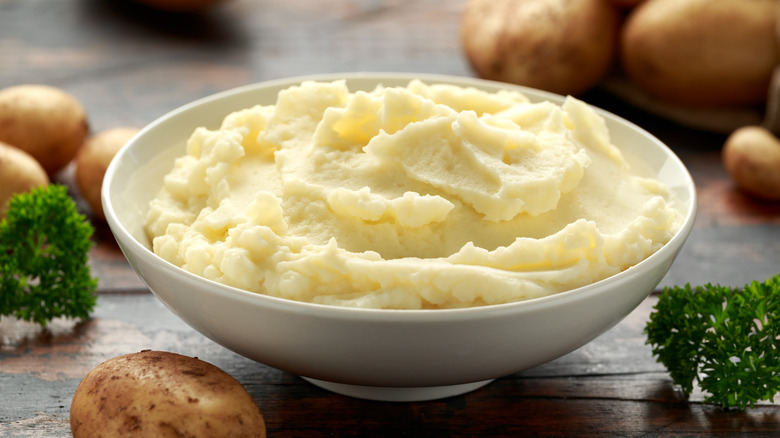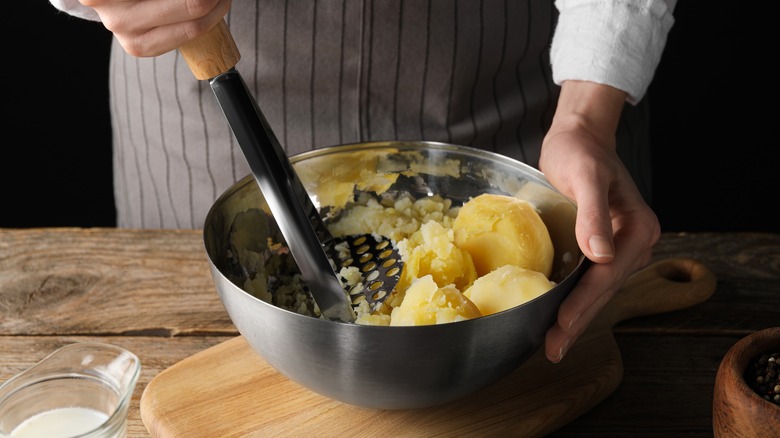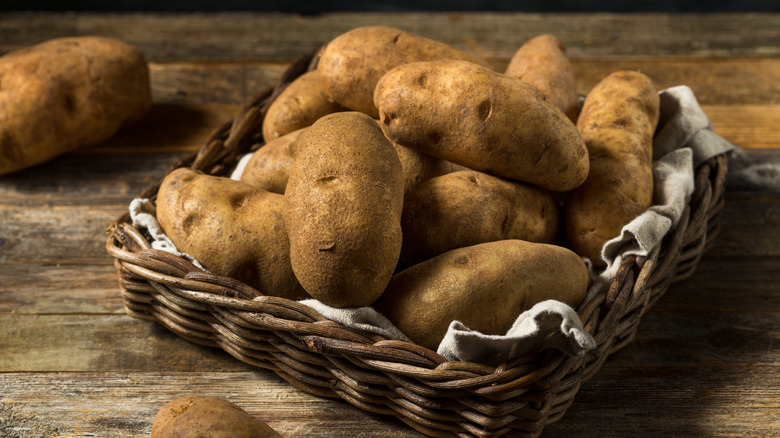How To Fix Mashed Potatoes That Got Too Starchy
Have you ever made mashed potatoes and found the texture less than appealing? Part of the appeal of this popular side dish is its creamy texture, so sticky or gluey potatoes leave a lot to be desired on the dinner table. In this case, the solution is to add extra butter. Butter serves two important purposes when it comes to potatoes. In addition to creating a more appealing texture, butter also enhances the flavor of potatoes, which can be downright bland without the proper additions. And if you want to boost the flavor even further, consider incorporating both butter and sour cream.
To make sure that the butter fully integrates with the spuds, take a stick or two right out of the refrigerator and add an ample portion to your mashed potatoes. While it might seem like melted butter is easier to mix in, this isn't the case, as there's a risk that the fat and milk solids (i.e., the protein portion of the butter) will come apart when melted. However, exercise caution when stirring, as too much stirring can be a bad thing when it comes to texture.
Why potatoes become excessively starchy in the first place
While it may be a bit surprising, potatoes require a light touch when it comes to mashing. Spuds are a hearty vegetable, and one might naturally think that the more mashing and whipping they're subjected to, the smoother they'll be. The opposite is actually true, as mashing potatoes too vigorously is what leads to a sticky texture in the first place.
Starch flows out of the potatoes as they're broken down, whether you're mashing by hand or using an appliance. Excessive amounts of starch ruin the creamy texture you're going for, as does cooking the potatoes for too long. In this case, starch takes on a gel-like texture, which causes the finished dish to become a lot stickier than it should be. You can avoid this issue by mashing potatoes carefully and paying close attention to the cooking time. In general, potatoes take about 20 to 30 minutes to cook when making mashed varieties.
Tips on addressing other mashed potato blunders
In order to make the best mashed potatoes possible, you must start with a careful spud selection. The key is to use potatoes with more starch than moisture, and this includes Idaho and russet potatoes. On the other hand, you should avoid fingerlings and new potatoes, as their waxy texture will prevent you from achieving the silky smoothness that's necessary for a satisfying side dish.
How you boil the potatoes can also impact the quality of the finished dish. For even doneness inside and out, place potatoes in a pot filled with cold water and then turn on the heat. If you deposit the potatoes into water that's already boiling, it's likely that the outer surface of the potato will achieve the proper doneness before the interior does, which can lead to texture issues.
Your method for cutting the potatoes prior to boiling is another important factor to consider. Quartering potatoes is best, as the smaller cuts cook too quickly in boiling water, which can lead to runny mashed potatoes. With these handy tips in your cooking arsenal, you'll never face the frustration of lackluster mashed potatoes again.


